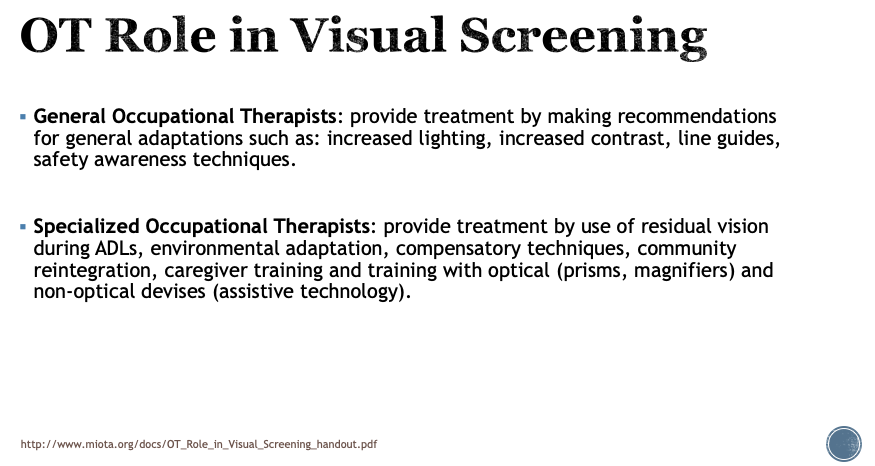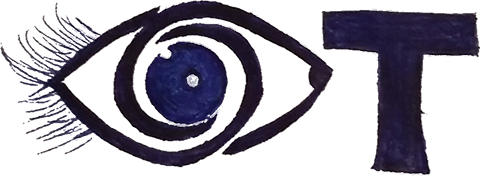The fundamental belief of occupational therapy is to reduce the impact of disability and participation in valued activities in order to achieve the highest level of quality of life. Occupational therapy plays a vital role in providing optimal care for persons who are impacted by low vision.
A low vision diagnosis can significantly restrict, and even eliminate, an individual’s ability to drive, cook, bathe, dress, write, take care of loved ones, take care of pets, to name a few. As activity analysis experts, occupational therapists (OTs) are able to assist those who suffer from low vision by modifying their environment and/or the task to limit or alleviate those restrictions. Additionally, OTs are experts and knowledgeable with adaptive devices and assistive technology that may include optical and non-optical devices to assist individuals affected by visual impairments in the completion of ADLs. Furthermore, OTs can also work with persons to use their remaining vision as efficiently as possible. For example, a person who has attained a visual field cut can be educated and trained on the use of a technique of visual scanning to avoid missing objects that may hinder safety.
Ultimately, the role of occupational therapists is to evaluate what the persons desire and need to do, determine which factors act as barriers to performance, and develop a plan of care to meet the person’s needs.
Low vision is a specialty within the occupational therapy practice. Therefore, those who address and provide skilled therapeutic interventions for persons with a low vision impairment must specialize and be certified in low vision. However, general occupational therapy practitioners can address low vision by educating on the use of compensatory techniques and recommending general adaptations.

